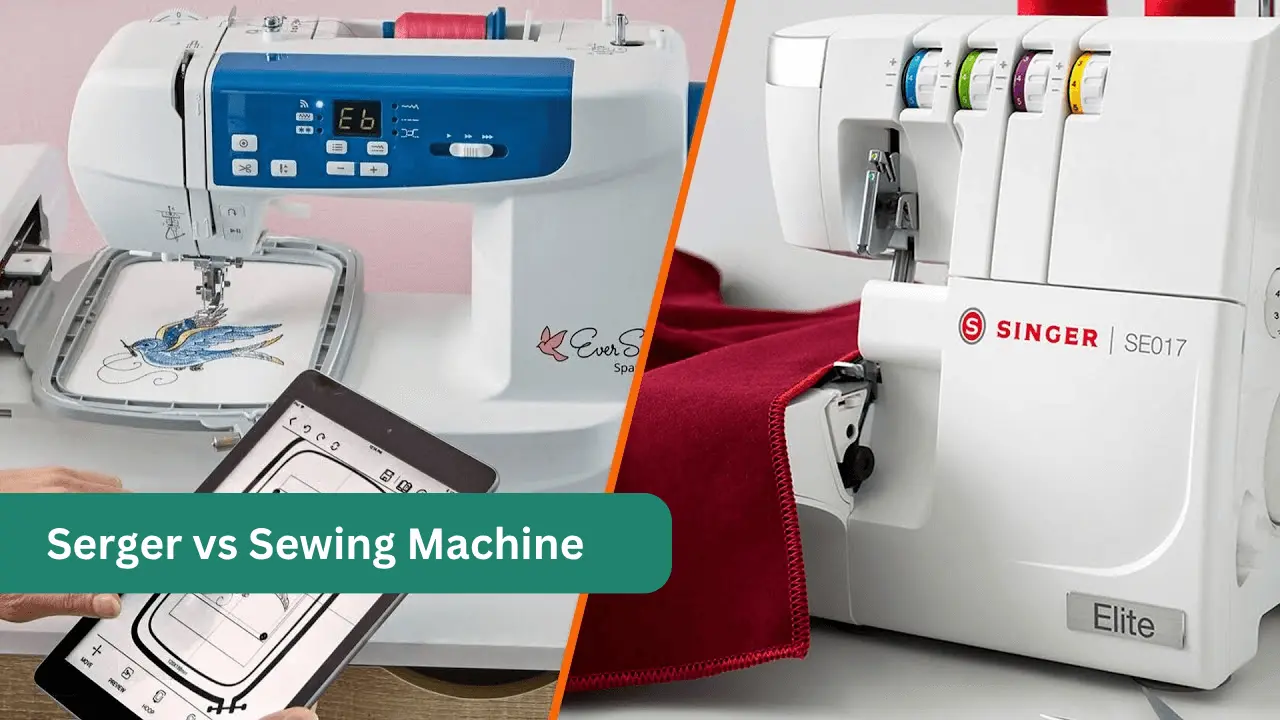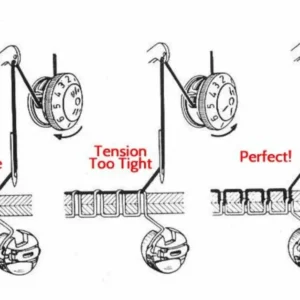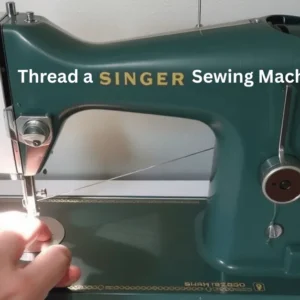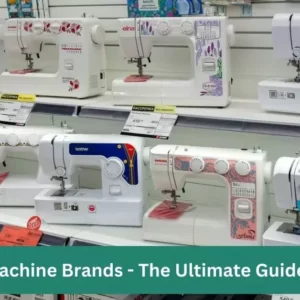When comparing serger vs sewing machine options, the main difference is function: sewing machines join fabric pieces together with various stitches, while sergers cut, sew, and finish fabric edges simultaneously using 3-5 threads. Most sewists need a sewing machine first for versatility, then add a serger later for professional finishing.
If you’re deciding between a serger vs sewing machine, it’s smart to start with a sewing machine for general projects, then consider adding a serger once you’re sewing regularly and want store-quality seam finishes.
Table of Contents
- 1 What Each Machine Does
- 2 Serger vs Sewing Machine: Key Differences Breakdown
- 3 When to Use Each Machine
- 4 Pros and Cons Comparison
- 5 sewing machine vs serger Cost Analysis
- 6 Which Machine to Buy First
- 7 Do You Need Both Machines?
- 8 Making the Right Choice for Your Needs
- 9 Frequently Asked Questions
- 10 Final Recommendations
What Each Machine Does
What is a Sewing Machine?
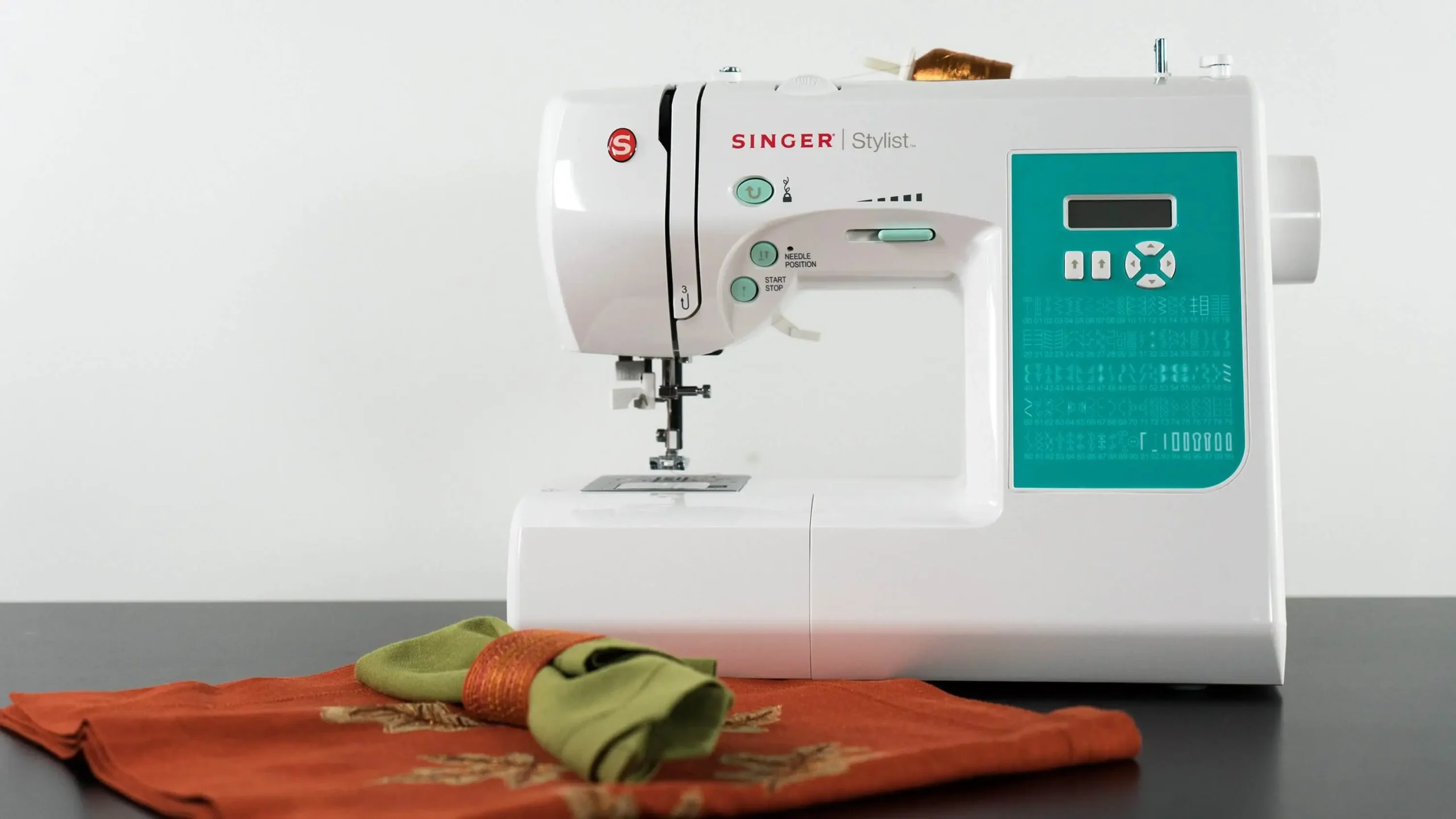
A sewing machine is your general-purpose fabric construction tool. It creates straight stitches, zigzag patterns, buttonholes, and decorative designs using one or two threads.
Think of it as the Swiss Army knife of sewing. You’ll use it for:
- Joining fabric pieces together
- Creating hems and seams
- Installing zippers and buttons
- Quilting and patchwork
- Basic repairs and alterations
Most home sewists start here because sewing machines handle 80% of typical sewing projects.
What is a Serger Machine?
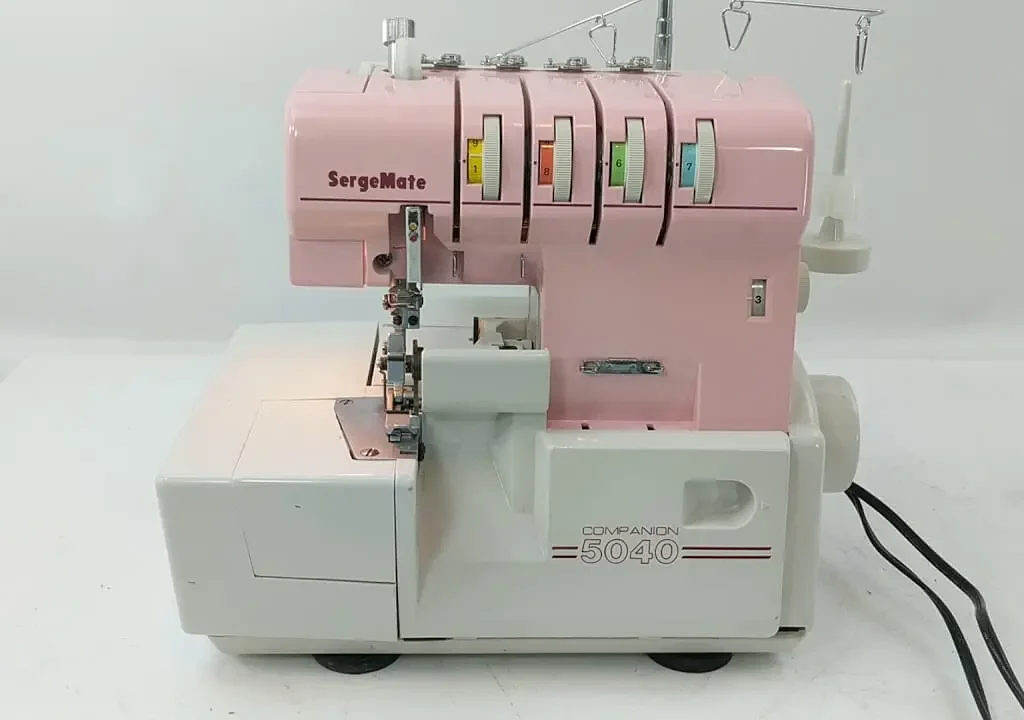
A serger (also called an overlock machine) is a specialized tool that performs three tasks at once: it cuts excess fabric, sews the seam, and finishes the raw edge to prevent fraying.
Sergers use 3-5 threads to create professional-looking seams like those in store-bought clothes. The result is a strong, flexible seam that looks clean and finished.
What do sergers do best?
- Create professional seam finishes
- Sew stretchy knit fabrics perfectly
- Prevent fabric edges from fraying
- Produce rolled hems on lightweight materials
- Speed up garment construction
Serger vs Sewing Machine: Key Differences Breakdown
This section explores how serger vs sewing machine functionality compares across features like thread usage, speed, and fabric handling.
Thread Usage and Stitch Types
Sewing machines use 1-2 threads and create:
- Straight stitches for basic seaming
- Zigzag stitches for stretch and finishing
- Decorative stitches for embellishment
- Buttonhole stitches
- Various utility stitches
Sergers use 3-5 threads and specialize in:
- 3-thread overlock (most common)
- 4-thread overlock (extra strong)
- 5-thread safety stitch
- Rolled hem stitch
- Flatlock seams
The multiple threads create seams that stretch with the fabric, making sergers ideal for knits and activewear.
Speed and Efficiency
When it comes to speed, the serger vs sewing machine comparison is clear: sergers complete multiple steps at once, making them much faster for seam finishing.
Fabric Handling Differences
Sewing machines:
- Work with any fabric weight
- Require careful edge finishing in separate steps
- Handle thick layers well
- Better for precise topstitching
Sergers:
- Excel with knit and stretch fabrics
- Automatically trim and finish edges
- Struggle with very thick materials
- Create consistent seam allowances
Serger vs sewing machine Learning Curve
Sewing machines are more beginner-friendly. Threading is straightforward, and you can see exactly what’s happening as you sew.
Sergers have a steeper learning curve. Threading 3-5 threads through multiple guides and tensions takes practice. Many beginners find serger threading intimidating at first.
When to Use Each Machine
Choosing between a serger vs sewing machine depends on your projects.
Best Projects for Sewing Machines
Beginner Projects:
- Simple tote bags
- Pillowcases and cushion covers
- Basic skirts and pants
- Quilting projects
Advanced Projects:
- Tailored jackets and coats
- Detailed garments with zippers
- Home décor items
- Embroidered pieces
Fabric Types:
- Woven cottons and linens
- Heavy materials like denim
- Delicate fabrics require gentle handling
- Any project needing decorative stitching
Best Projects for Sergers
Ideal Projects:
- T-shirts and casual tops
- Athletic wear and swimwear
- Knit dresses and leggings
- Baby clothes (soft seams)
- Lingerie and undergarments
Fabric Types:
- Jersey knits
- Stretch cotton
- Spandex blends
- Lightweight wovens for rolled hems
- Any fabric needing professional finishing
Pros and Cons Comparison
Understanding the pros and cons of serger vs sewing machine use cases helps in making a smart purchase.
Sewing Machine Advantages
- ✅ Versatility: Handles almost any sewing task
- ✅ Beginner-friendly: Easy to learn and use
- ✅ Wide stitch variety: Decorative and utility options
- ✅ Precision work: Perfect for detailed construction
- ✅ Lower cost: Entry-level machines start around $100
- ✅ Easy threading: Simple one or two-thread system
Sewing Machine Disadvantages
- ❌ Time-consuming finishing: Requires separate steps for professional edges
- ❌ Limited stretch capability: Not ideal for very stretchy fabrics
- ❌ Basic seam appearance: Won’t achieve store-bought look without extra work
Serger Advantages
- ✅ Professional results: Creates commercial-quality seams
- ✅ Speed: Fast seaming and finishing in one step
- ✅ Perfect for knits: Handles stretch fabrics beautifully
- ✅ Strong seams: Multiple threads create durable construction
- ✅ Clean finish: Automatically prevents fraying
Serger Disadvantages
- ❌ Limited functionality: Cannot replace all sewing machine tasks
- ❌ Complex threading: Difficult for beginners to master
- ❌ Higher thread consumption: Uses 3-5 times more threads
- ❌ No decorative options: Focused only on construction
- ❌ Maintenance intensive: Requires blade changes and complex adjustments
sewing machine vs serger Cost Analysis
When budgeting for your sewing setup, a serger vs sewing machine cost comparison is essential. Sewing machines are typically cheaper, but sergers save time and offer a professional finish.
Initial Investment
Get a basic idea about a good sewing machine or serger machine for your money:
Basic Sewing Machines: $100-300
- Perfect for beginners
- Handle most home sewing projects
- Good stitch quality for the price
Mid-range Sewing Machines: $300-800
- More stitch options
- Better build quality
- Computerized features
Entry-level Sergers: $200-400
- 3-4 thread capability
- Basic differential feed
- Adequate for home use
Quality Sergers: $400-800
- 5-thread capability
- Better differential feed
- More reliable performance
Ongoing Costs
Thread expenses add up quickly with sergers. A typical sewing machine project might use $2-3 in thread, while the same project on a serger could use $8-12.
Maintenance costs include:
- Serger blade replacement ($10-20 annually)
- More frequent servicing due to complexity
- Higher thread consumption
Return on investment comes from:
- Professional-looking results
- Time savings on finishing
- Ability to work with challenging fabrics
- Increased sewing enjoyment and success
Which Machine to Buy First
Are you still deciding on serger vs sewing machine as your first buy?
Start with a Sewing Machine If:
- You’re completely new to sewing
- Your budget is under $300
- You want maximum project variety
- You’re unsure about a long-term commitment
- You prefer learning one skill at a time
Most sewing experts recommend starting with a reliable sewing machine. You can create beautiful projects and learn fundamental skills before adding specialized equipment.
Consider a Serger First If:
- You primarily want to make clothing
- You love knit fabrics
- Professional finishing is your priority
- You’re already comfortable with sewing basics
- You have a specific project requiring serged seams
This path works for sewists with clear goals and some existing experience.
The Smart Approach: Start with Sewing Machine Basics
For most people, this progression works best:
- Start with a quality sewing machine ($200-400 range)
- Learn fundamental techniques (seaming, hemming, basic construction)
- Identify your sewing preferences (garments vs. crafts, knits vs. wovens)
- Add a serger once you’re sewing regularly and want better results
This approach builds skills progressively and ensures you’ll actually use both machines.
Do You Need Both Machines?
Why Serious Sewists Own Both
The answer depends on your sewing goals, but many dedicated sewists eventually own both machines because they serve different purposes.
Complementary functions:
- Sewing machine for construction and details
- Serger for finishing and knit fabrics
- Together, they create professional results
Workflow efficiency:
- Use a serger for initial seaming
- Switch to a sewing machine for zippers, hems, and topstitching
- Finish with a serger for the final edge treatment
When One Machine is Enough
Stick with just a sewing machine if:
- You sew occasionally
- The budget is tight
- You prefer woven fabrics
- Your projects don’t require professional finishing
- You enjoy hand-finishing techniques
A serger alone works if:
- You only make simple knit garments
- Professional finishing is essential
- You’re willing to hand-sew details like hems and zippers
- Your projects are limited in scope
Making the Right Choice for Your Needs
For Absolute Beginners
Start with a reliable sewing machine in the $200-400 range. Look for:
- Automatic buttonhole
- Multiple stitch options
- Good warranty and local dealer support
- Positive reviews from other beginners
Popular beginner models include Brother XM2701, Singer Start 1304, and Janome 2212.
For Garment Sewists
If clothing construction is your main interest:
- Begin with a sewing machine that handles various fabrics well
- Add a serger within your first year of regular sewing
- Focus on models with good differential feed for professional results
For Budget-Conscious Sewists
Under $300 total budget:
- Choose one quality sewing machine over two cheap machines
- Look for used machines from reputable brands
- Consider older mechanical models for reliability
$300-600 budget:
- A good sewing machine plus an entry-level serger
- Or invest in one high-quality sewing machine
$600+ budget:
- Quality sewing machine and serger combination
- This setup handles almost any home sewing project
Frequently Asked Questions
Can a serger replace a sewing machine?
No. A serger complements a sewing machine but doesn’t replace its ability to sew zippers, buttonholes, or topstitch.
Is a serger good for beginners?
It’s not ideal as your first machine, but it’s great once you understand basic sewing.
Can you hem with a serger?
Yes, especially using a rolled hem function. However, for precise hems like blind hems, a sewing machine is better.
What is a serger machine best used for?
Finishing seams, sewing stretch fabrics, and speeding up garment production.
Can I serge with a sewing machine?
You can mimic serging with a zigzag stitch or an overcasting foot, but it won’t be as clean or durable.
Final Recommendations
The Bottom Line
Most sewists should start with a sewing machine because it provides the foundation for all sewing skills. Once you’re sewing regularly and want professional results, add a serger for specialized finishing.
Quick Decision Guide
Choose a sewing machine first if:
- New to sewing
- Limited budget
- Want project variety
- Prefer woven fabrics
Add a serger when:
- Sewing 2+ times per week
- Making lots of knit garments
- Want professional finishing
- Ready to invest in a specialized tool
Investment Strategy
- Year 1: Quality sewing machine, learn fundamentals
- Year 2: Add a serger if sewing regularly
- Ongoing: Upgrade machines as skills and needs develop
Remember, the best machine is the one you’ll actually use. Start with clear goals, a realistic budget, and a willingness to learn. Both machines can create beautiful projects when matched with proper technique and practice.
Whether you choose a sewing machine, serger, or both, focus on mastering your tools and enjoying the creative process. Great sewing results come from skill development, not just equipment.
Ready to start your sewing journey? Begin with a reliable sewing machine that matches your budget and goals. As your skills grow, you’ll know exactly when it’s time to add a serger to your sewing room.

